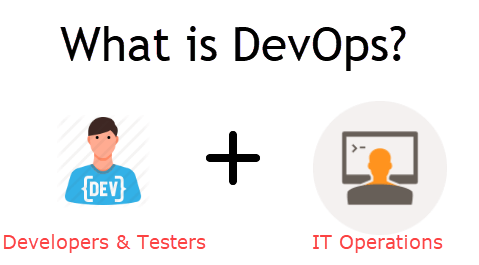CI/CD, Agile, And DevOps
This article will discuss the differences between CI/CD, Agile, and DevOps. First, it will look at what Continuous Integration and Delivery (CI/CD) is. Next, it will discuss agile teams and what it has to do with CI/CD. Then it will briefly look at DevOps as a practice. These three things are interrelated, forming software processes in how software engineers build entire applications.
Continuous Integration/Continuous Delivery (CI/CD)
First, let’s look at what CI/CD is. CI/CD stands for Continuous Integration and Delivery. CI/CD is an extension of agile, so if you know how to do CI/CD, you already know how to do agile. It is a software development practice used to build and deliver software. It is done by integrating the development pipeline is the procedures that follow the process of continuous integration (CI).
CI (sometimes called “conformation”) runs all the automated testing of each change made to application code in one location, as it happens on a machine that serves as a broker between every developer machine and every automated test server. The last stage of CI is to have the automated test performed on the complete application when all changes have been made and move all these results into a shared repository, from which it can be deployed to servers.
The following characteristics define continuous Delivery (CD):
- Enables the major release of a feature or a software system to production in a controlled manner.
- Initiated at any point during the software delivery process cycle.
Purpose of CI/CD
The continuous Integration and Continuous Delivery process (a.k.a CI/CD) is a software development practice that relies on frequent, incremental integration of new code into the main branch of an application to reduce the final delivery lead-time.
By integrating regularly, more bugs can be identified and fixed before deployment, and deliverables get closer to production quality at speed each time they’re updated.
By delivering incremental feature upgrades, it’s possible to assemble software in a way that can only be described as “progressive.”
Continuous Integration (CI) is the practice of automatically building and testing projects on a regular basis. All code is automatically built, including test code. This allows for the early detection of problems through unit tests and ensures that all requirements are met before requests go to production. This also keeps code quality in a consistent state between all the machines it runs on.
What are CI/CD Tools?
There are many tools to help you create an effective CI/CD process. And while the technology market is constantly changing, you must consider your needs and select CI/CD tools accordingly. Certain features make some apps to customers better suited for enterprises than others, and vice versa. both offer different features, making one better for specific use cases than the other. One great example is Jenkins vs. Travis CI;
It’s also important to consider the maturity of a particular application when making this decision. According to a recent Gartner report, around 38 percent of organizations do not have a continuous automated integration (CI) or continuous deployment (CD) process, with that figure expected to reach 50 percent by 2016. Companies that aren’t ready to automate their processes are stuck with the status quo and miss valuable opportunities to improve their processes.
Agile Software Development
Agile software development is a recent style of software development that relies on collaborative teamwork and allows for continuous change.
It’s also about creating solutions iteratively and partnering with the end-user to deliver the best product possible. The major principles are human interactions, rapid and frequent delivery, incremental value delivery, decentralized worth, customer collaboration feedback loop, and continuous improvement.

Another principle is the iterative approach: working in short cycles until delivering a working solution. The goal of agile software development is to develop software solutions incrementally and deliver them frequently to improve the quality of the solution over time.
The term “agile software development” was introduced by Fred Brooks in his book “The Mythical Man-Month.” He defined it as: “A method by which delivery of software can be radically improved.
Purpose of Agile Software Development
Agile software development is a novel method of creating and developing web applications. User-driven requirements are prioritized, critical features are identified in the first frequent release, and time to market is greatly reduced by short iterations of software development. Though agile development may have been developed for web developers in the late 1990s, this model has now spread to other fields like product management and engineering practices. Agile methods allow businesses to leverage rapid prototyping and innovative mobile software design more effectively than ever before with increased customer satisfaction.

Agile software development methods provide benefits over the traditional software development model, including improved speed to market, greater responsiveness to customers’ needs, and reduced costs. The benefits of agile tools methods are seen on the product side as well. There is greater consumer satisfaction with agile products because they offer the right features at the right time and are designed to be easy to use.
DevOps (Development & Operations)
DevOps culture is a movement that encourages developers and operations engineers to work together more closely on software development teams. The DevOps team extends the individual development team, providing continuous integration testing, testing, and deployment services.

A DevOps engineer ensures that code works properly, integrates it with other pieces of the project’s code base, tests for compatibility with other systems in the environment of use (e.g., cloud-based), and deploys it to the production environment (or beta). In a nutshell, DevOps concepts ensure that code management is the development in continuous testing and delivered effectively.
A DevOps engineer has a set of skills, including but not limited to!!
Purpose of DevOps
DevOps is a software development process focused on the efficient release of products with minimum cost, time, and risk. It is, in essence, a cultural change, not just a technical one. DevOps tools practices are fundamentally fluid as they are determined by factors such as the project requirements, priorities, and approach.
Approaches may vary based on resources available (e.g., limited vs. unlimited budget) or can be adjusted on an ad hoc basis to increasingly address new opportunities or threats in changing market conditions. DevOps implementation is a rapidly evolving practice that can be implemented in software development organizations in a variety of ways based on their existing practices and capabilities.
The following steps describe the high-level process:
1. Understanding the Problem/Need
2. Identifying Solutions
3. Selecting the Right Solution(s)
4. Implementing the Solution(s)
5. Verifying that the Solution is Complete and Adequate
6. Monitoring the Results of the Solution
7. Adjusting the Solution as Necessary in Future Iterations
A necessary prerequisite to developing a DevOps process is that there must be a problem to fix. There are a variety of possible root causes for any given problem, and solutions may be quite different based on the root cause. Without a clear understanding of what is causing problems with something that matters, it is difficult to know what needs fixing or how to fix it.
DevOps is the result of different scenarios:
The line between developers and operations engineers in a software company is blurry. Some operations engineers do not have any development experience and developers who are not interested in operations. DevOps concepts force the coders to learn multiple skills, including development, testing, and deployment.
DevOps is a new way of organizing an organization’s software development and software delivery process. The goals of DevOps principles include increased efficiency in the software delivery cycle, especially speedier time to market, by applying continuous integration and continuous delivery tools to the development process. DevOps practices focus on automating manual processes through automated applications. It automates repetitive tasks for better collaboration among developers and operations engineers.
What is CI/CD in DevOps? Is CI/CD Part of Agile?
CI/CD, also known as Continuous Integration and Continuous Delivery pipeline, is a new software engineering. They aim to reduce lead time from planning to production by automating the pipeline between these three stages.
CI/CD is a valuable tool for engineering teams and organizations pursuing Agile development because they help you release your product more often (or at least more predictably) within sprints. CI/CD relies on automation tools like testing tools, making it easy to schedule or execute.
Is DevOps a renewal for agile?
DevOps principles is a methodology that provides agile principles and lean engineering. It brings engineering and ops together for quicker release cycles, high-quality products of software, and better collaboration.
A DevOps engineer also has to know about Security Association With Software Development Life-Cycle (SADLS) and business domains because it needs input from all directions. The three tenants of DevOps are visibility, information sharing, and feedback loops; the failures of these tenants will be shown in the impact on reliability or availability.
Main Differences between CI/CD, Agile, and DevOps
While all three terms have something to do with software development, they each refer to different process aspects.
Agile is a software development method that strives for frequent iterations and collaboration.
DevOps is a set of best practices, processes, and tools that aim to bridge the gap between development and IT operations teams.
CI/CD stands for continuous integration/continuous delivery – when systems are automatically built if all tests pass successfully.
Different methods have the same goal: to deliver high-quality code updates which is faster than through more traditional processes.
To learn more, visit Cloudstorks today.
